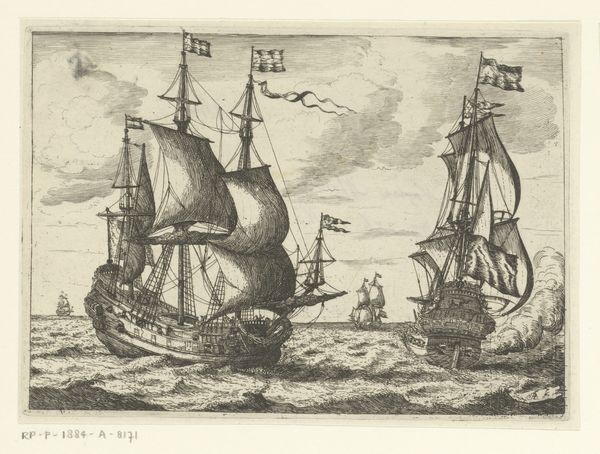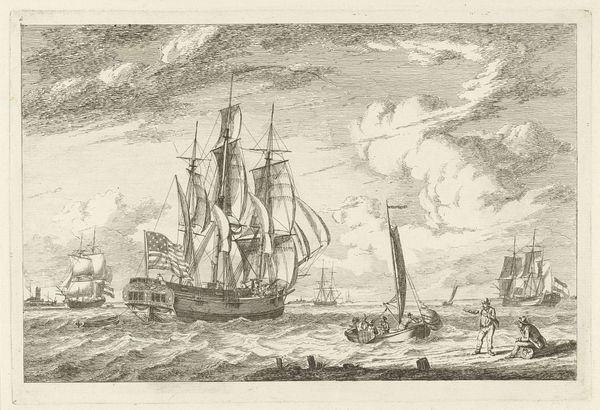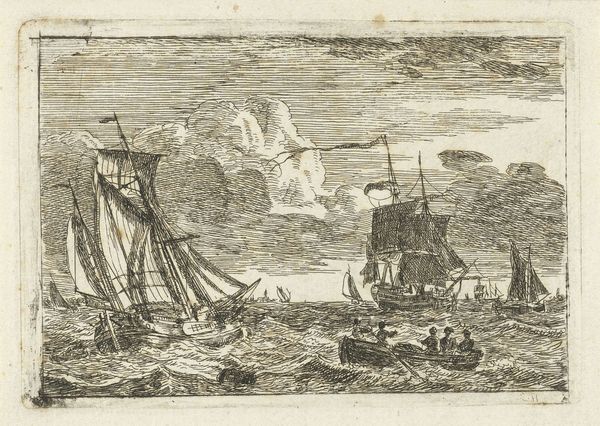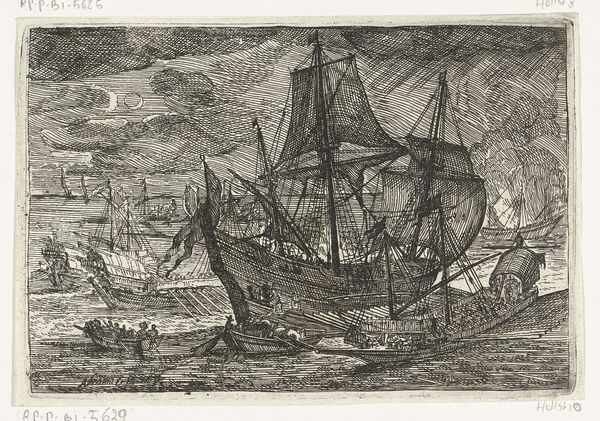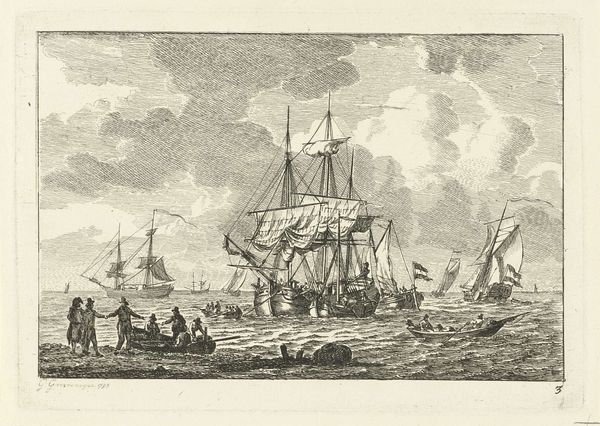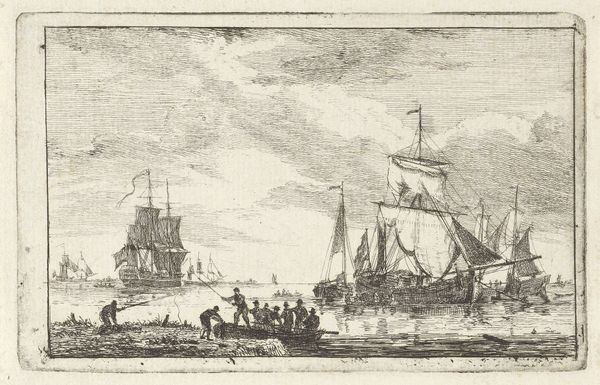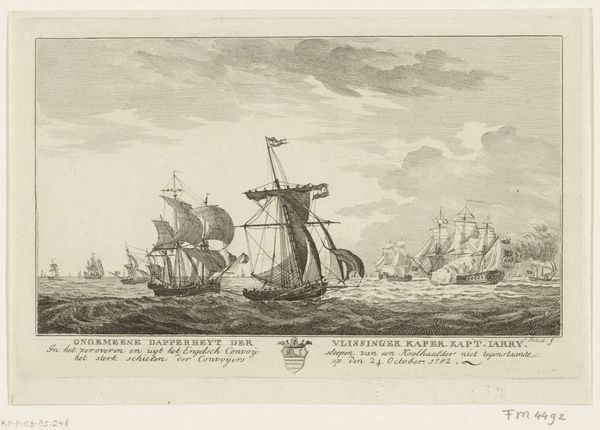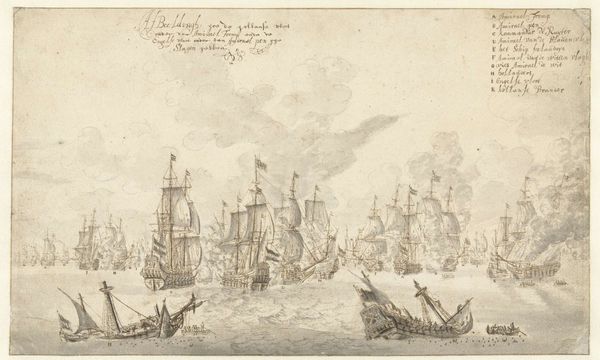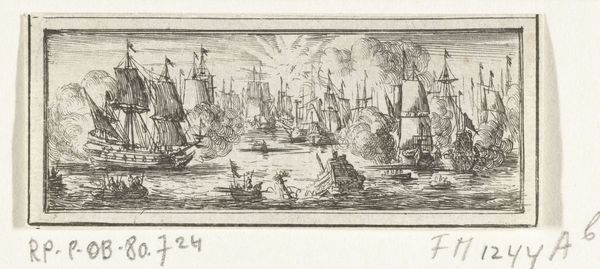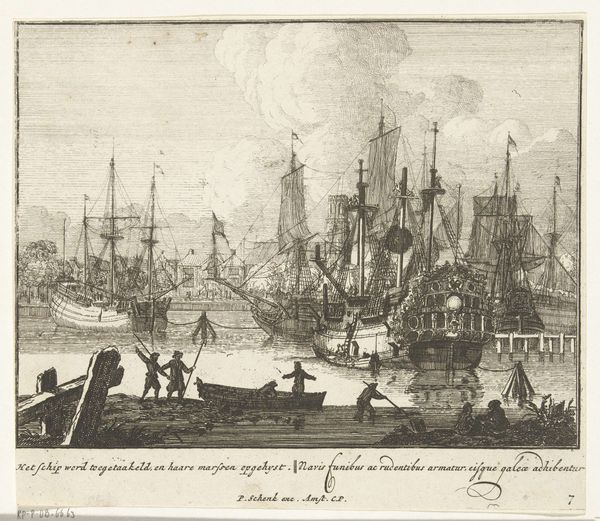
print, engraving
#
dutch-golden-age
# print
#
landscape
#
engraving
Dimensions: height 175 mm, width 285 mm
Copyright: Rijks Museum: Open Domain
Carel van der Hem made this print of whaling ships, but we don't know exactly when. The scene depicts Dutch ships during what was a lucrative but dangerous enterprise. This image reflects the economic and colonial ambitions of the Dutch Republic. The ships are rendered with impressive detail, emphasizing their size and strength, visual symbols of Dutch maritime power. The whales, shown being hunted, represent both the natural resources being exploited and the risks involved. Whaling was not just an economic activity; it was deeply embedded in the social fabric of the Netherlands. Profits from whaling funded the construction of canals and public buildings, like the Rijksmuseum itself. Prints like these were often commissioned to promote these activities, reinforcing the dominant social values and economic policies of the time. However, today, we can also view this work as a historical document of the complex relationship between humans and the environment. To fully understand this image, we can look at archival records of the Dutch East India Company, maritime histories, and studies of Dutch colonial practices. Art is never created in a vacuum; its meaning is always contingent on its historical and institutional context.
Comments
No comments
Be the first to comment and join the conversation on the ultimate creative platform.

